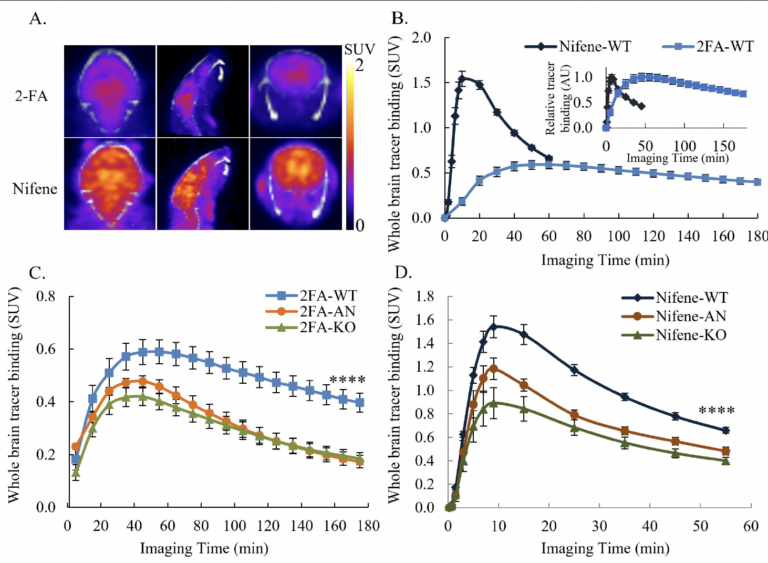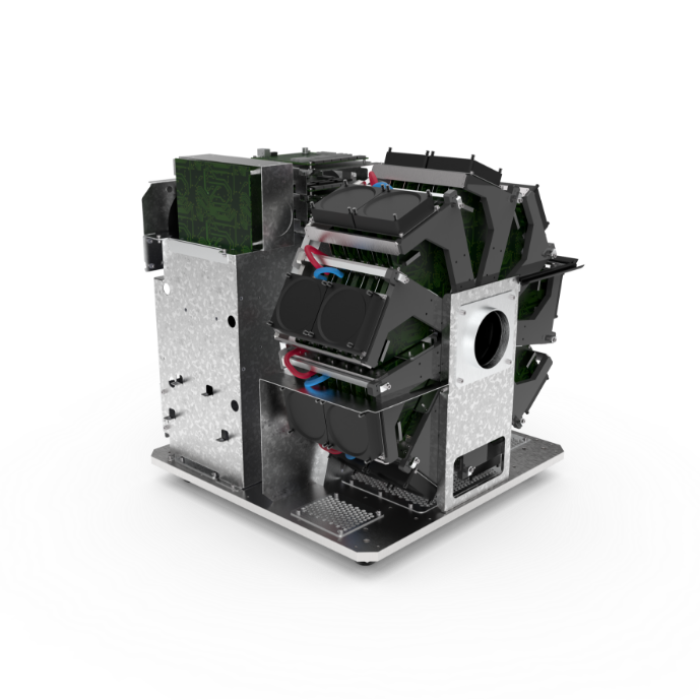Trapping of Nicotinic Acetylcholine Receptor Ligands Assayed by In Vitro Cellular Studies and In Vivo PET Imaging
Dynamic PET-CT imaging and kinetic modeling can be used to evaluate radiotracer kinetics and receptor affinity, which is important during drug design.
In this study by Zhang et al., published in the Journal of Neuroscience, nicotinic receptor membrane-permeant ligands were radiolabeled and evaluated by dynamic PET-CT, combined with kinetic modeling, in order to investigate how these ligands distribute in the brain, as this is an important question in nicotine addicition. By combining in vitro and in vivo imaging, the researchers mapped both brain-wide and subcellular distributions of nicontinic receptor ligands, which provided useful information on nicotine addiction.
Research question
Mechanisms of nicotine addiction remain poorly understood. An earlier study using in vitro methods found that the anti-smoking nicotinic ligand, varenicline (Chantix) was trapped in α4β2R-containing acidic vesicles. This study provided evidence that these intracellular acidic vesicles were α4β2R-containing Golgi satellites. However, in vivo evidence is needed to provide additional information.
Experiment
In the current study, dynamic in vivo PET imaging with F-18 labeled nicotinic ligands is done to provide additional evidence that differences in PET ligand trapping in acidic vesicles were the cause of differences in PET ligand kinetics and subcellular distributions of these compounds, which is important information to take into account during drug design.
Two PET 18F-labeled imaging ligands were chosen: [18F]2-FA with varenicline-like pKa and affinity and [18F]Nifene with nicotine-like pKa and affinity.
Results
[18F]2-FA PET-imaging kinetics were very slow consistent with 2-FA trapping in vesicles. In contrast, [18F]Nifene kinetics were rapid, consistent with its binding to α4β2Rs but no trapping. Specific [18F]2-FA and [18F]Nifene signals were eliminated in β2 subunit knock-out (KO) mice or by acute nicotine (AN) injections demonstrating binding to sites on β2-containing receptors. Chloroquine (CQ), which dissipates GSat pH gradients, reduced [18F]2-FA distributions while having little effect on [18F]Nifene distributions in vivo consistent with only [18F]2-FA trapping in GSats.
These findings combining in vitro and in vivo imaging revealed new mechanistic insights into the kinetics of weak base PET imaging ligands and the subcellular mechanisms underlying nicotine addiction.

